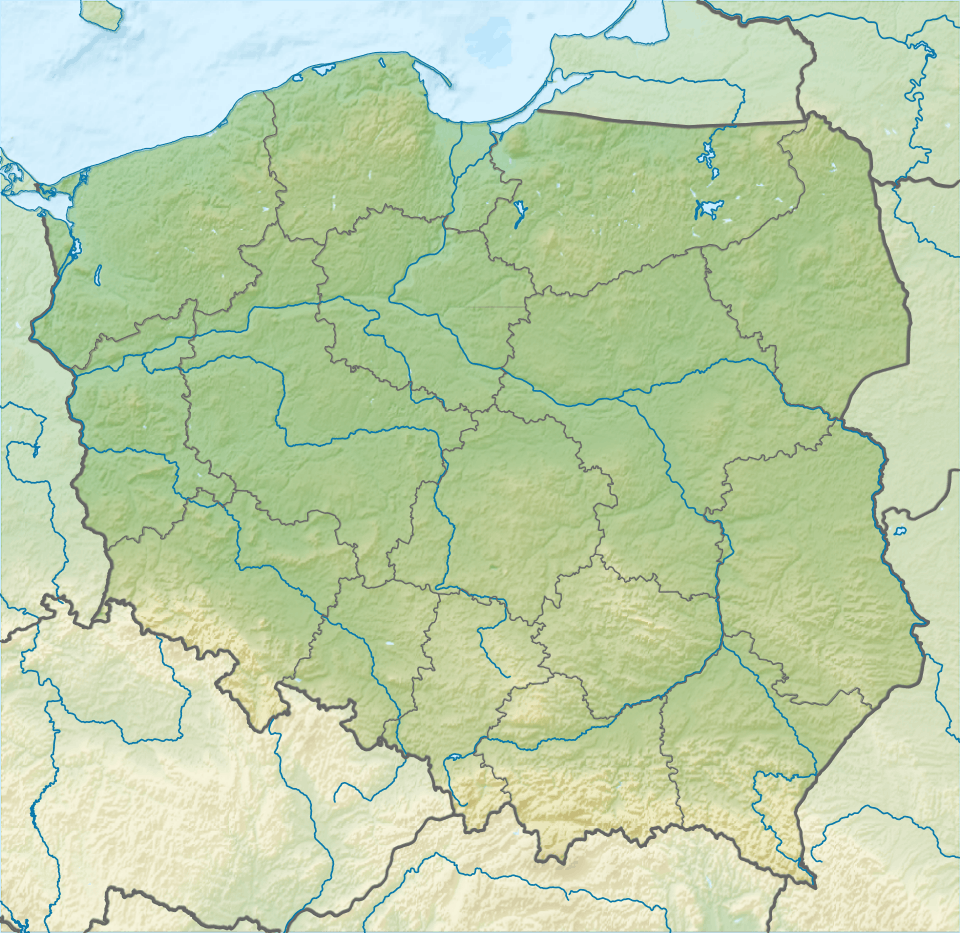Zofiówka Sanatorium
| Zofiówka Sanatorium | |
|---|---|
| Defunct | |
|
In operation during the interwar period | |
 Location in Poland | |
| Geography | |
| Location | Otwock, Poland, PL |
| Coordinates | 52°42′N 21°10′E / 52.7°N 21.16°ECoordinates: 52°42′N 21°10′E / 52.7°N 21.16°E |
| History | |
| Closed | 1990s |
|
| |
Zofiówka Sanatorium is a defunct mental health facility in the town of Otwock in Poland, built at the beginning of the 20th century. In the Second Polish Republic, the sanatorium complex was expanded with more buildings and staff. Zofiówka initially had 95 beds, but this number had increased to 275 by 1935. The Jewish history of Zofiówka has come to its tragic end in the course of the Holocaust following the invasion of Poland by Nazi Germany.
Construction
The history of the old Jewish sanatorium starts at the beginning of the 20th century. Back then, the institutionalized treatment of mental disorders was in its infancy. In 1906, Polish-Jewish neurologists Adam Wizel, Samuel Goldflam, Ludwik Bregman and Adolf Weisblat formed the "Society for Poor Jews with Nervous and Mental Illnesses" (Polish: Towarzystwo Opieki nad Ubogimi, Nerwowo i Umysłowo Chorymi Żydami). The sanatorium's director was Dr. Stefan Miller.[1] A year later, a donation by the philanthropist Sophia Endelman enabled the purchase of 17 hectares of land and in 1908 the first building of a new sanatorium was built by the association there. An important part of the treatment was restoring patients to society by enabling them to practice employment. In its isolation ward (part of the hospital reserved for the most difficult patients), the mother of famous Polish poet, Julian Tuwim, Adela Tuwim was placed before World War II.[2][3]
Holocaust history
In late 1940, the asylum fell within the so-called ‘medical zone’ formed by the Germans in the newly established Jewish ghetto of Otwock. The institution was still working during the early stages of the occupation of Poland, but the conditions dramatically worsened. Almost 400 patients were sentenced to a slow and torturous death by starvation as part of the Nazi extermination Aktionen. Zofiówka ended its existence at the same time as ghetto in Otwock.
On the morning of 19 August 1942, the Ukrainian Trawnikis supervised by the Germans, gathered the patients and the hospital crew in the first pavilion. Some 100-140 victims were shot on the spot, the rest were put on the Holocaust train to Treblinka along with Otwock’s Jewish population of 7,000.[2] Only a few doctors, who managed to escape to Warsaw by ambulance, survived. Some of the staff people committed suicide.
In 1943 Zofiówka served Germans as Lebensborn, the institution of charity care. The facility also dealt with the Germanization of Polish children, and bringing them up for adoption to families in Germany.
After World War II
Zofiówka returned to its original medical purposes after the Soviet takeover, but patients were mainly children and young people. Between 1985 and mid 90’s, the facility was used in treating neuropsychiatric disorders associated with drug addiction. This continued on until the decision was made to finally close it.
The 2015, the Internet viral video called 11B-X-1371 was found to have been filmed at the abandoned facility, though by whom and when, exactly, are not known.[4]
References
- ↑ Engelking, Barbara; Leociak, Jacek (August 25, 2009). The Warsaw Ghetto: A Guide to the Perished City. p. 247. ISBN 9780300112344.
- 1 2 Webb, Chris (2009). "Otwock & the Zofiowka Sanatorium: A Refuge from Hell". Holocaust Research Project. Holocaust Education & Archive Research Team. Archived from the original on July 11, 2011. Retrieved 23 June 2013.
- ↑ Editorial (17 January 2015). "Matka poety wyrzucona przez balkon". RP.PL. Archived from the original on December 21, 2015 – via Internet Archive.
- ↑ Wehner, Mike (October 22, 2015). "Exclusive photos of the room where that disturbing video puzzle was created". The Daily Dot. Retrieved November 4, 2015.
